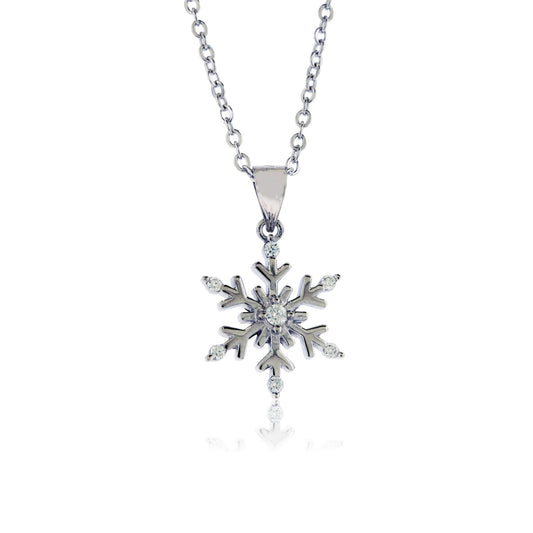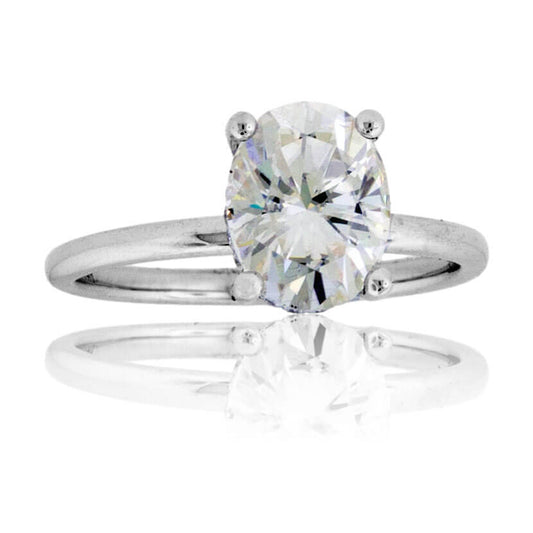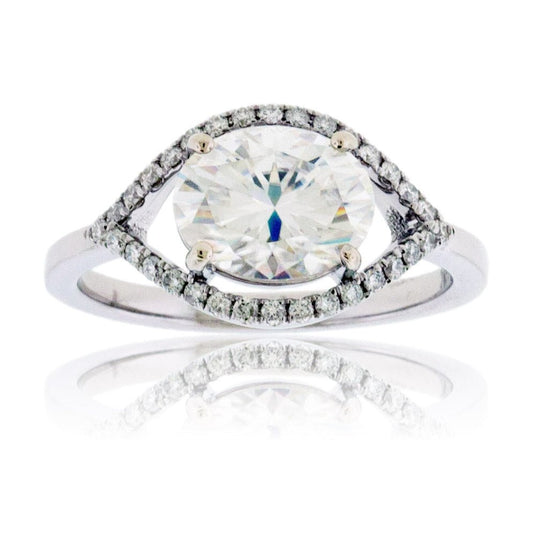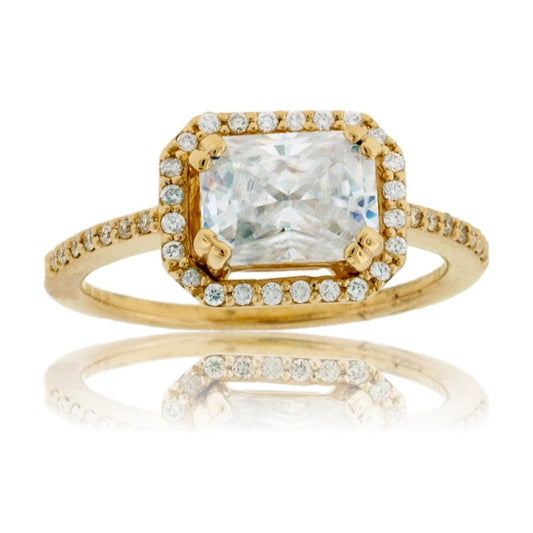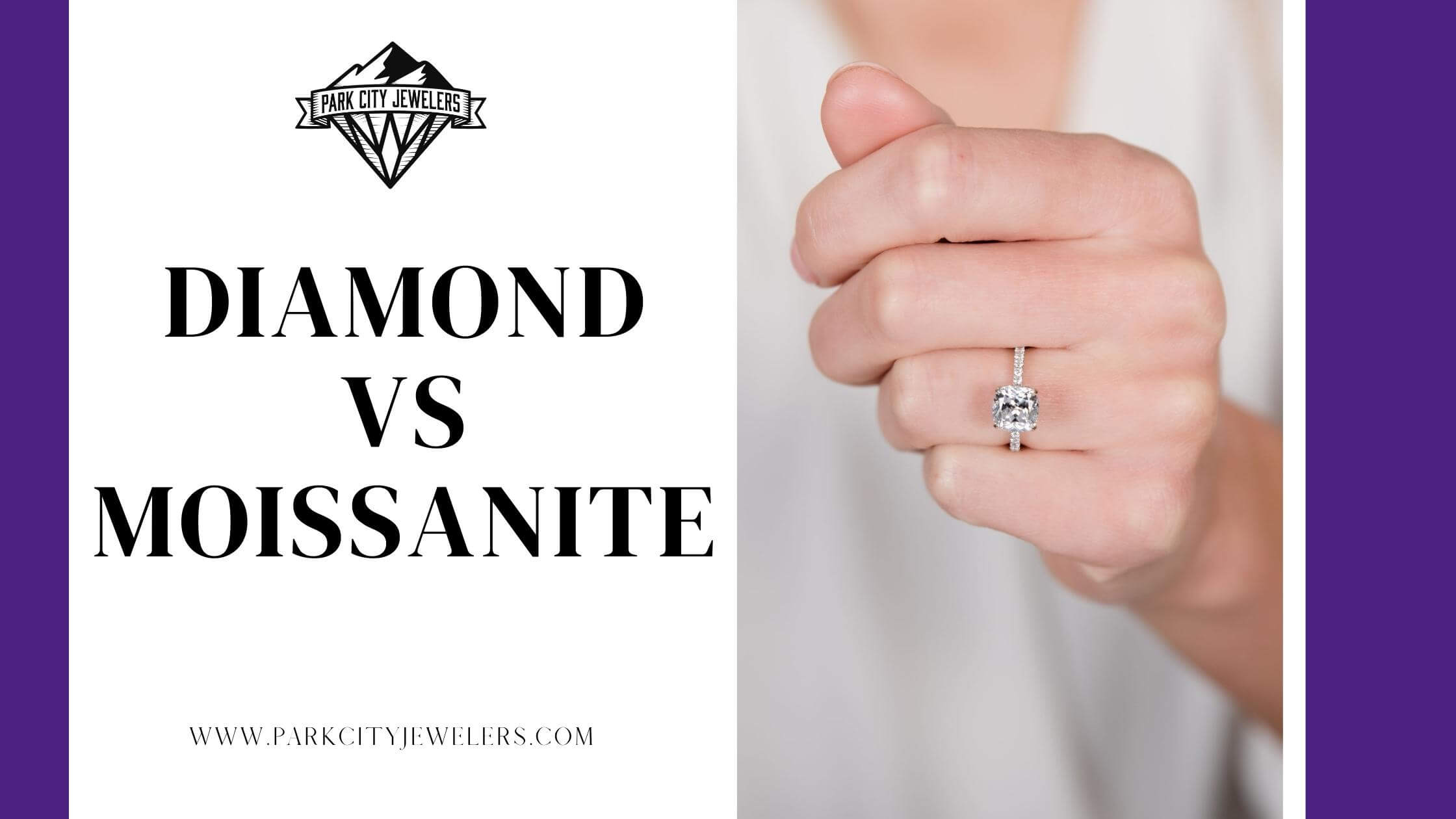
Diamond vs Moissanite vs Lab Grown Diamond
Moissanite is a budget-friendly diamond simulant used in fine jewelry. It looks very similar to diamonds, but some differences can often be seen with the naked eye. Continue reading to learn more about the visual and compositional differences between moissanite and diamonds.
What is Moissanite?
Moissanite was discovered in 1893 by Henri Moissan. He found microscopic particles in an Arizona crater. He initially suspected they were diamonds but determined that they were made from silicon carbide (rather than pure carbon). The particles he discovered were named after him.
Natural moissanite is extremely rare, but over time methods were developed to synthesize it in a lab, which is where the gemstones used in fine jewelry come from today. Moissanite is engineered to give a similar look to diamonds, but there are a few key differences between the two that are important to consider when purchasing.
Moissanite vs Diamond
Hardness
Gemstone hardness is measured on the Mohs Hardness Scale. Diamonds are the hardest naturally occurring material on earth and measure a 10 on the Mohs Hardness scale. The exceptional hardness of diamonds makes them an excellent choice in all settings, which has led a diamond engagement ring to symbolize a strong and long-lasting romantic relationship.
On the other hand, Moissanite measures a 9.25 on the Mohs Hardness Scale, which is slightly less than diamonds. Any gemstone that measures a 7 or above on the scale is considered ideal for everyday wear pieces in all settings. For comparison, emerald measures a 7.5 on the scale.
Look
Although moissanite is designed to look like diamonds, there are some visual differences that you’ll notice after close inspection. The main area in which moissanite differs from diamonds is the way that they sparkle.
Moissanite actually sparkles more and more colorfully than diamonds. Moissanite reflects about twice as much colored light when compared to diamonds. Colored sparkle is known as dispersion, and you'll likely notice the difference when you compare a large moissanite and diamond side by side.
It’s also important to note that moissanite is doubly refractive, while diamonds are singly refractive. This means that when you look into a moissanite gemstone, each facet will look doubled. Moissanite is not the only gemstone to feature double refraction, and a few notable examples are zircon, tourmaline, and sapphire.
Although moissanite has more sparkle than diamonds, diamonds have a more complex sparkle because of the way they’re faceted. This gives diamonds the sparkle they’re famous for. Moissanite can also have a more cloudy look when compared to diamonds and often need to be cleaned more often to maintain its sparkle.
Click here to see a video comparing diamond, moissanite, and white sapphire.
Grading
Diamonds are graded based upon the 4 Cs, which consist of cut, color, clarity, and carat weight. The combination of these four areas helps to determine the quality and value of a diamond.
Moissanite, on the other hand, isn’t graded the same way. Cut and clarity are very consistent among moissanites, so those aren’t generally considered distinguishing factors. Moissanite is valued based on size and color and can be colorless or near-colorless.
Choosing
Moissanite is a good alternative to diamonds for those on a tight budget. Moissanite typically costs about 1/10th the price of natural diamonds. A moissanite engagement ring is often used as an alternative for couples looking to spend less for a similar look.
It’s also common for couples to purchase a moissanite ring with plans to upgrade to a diamond in the future. Our team has decades of experience in the jewelry industry, and we can help you weigh all your options and make the best choice.
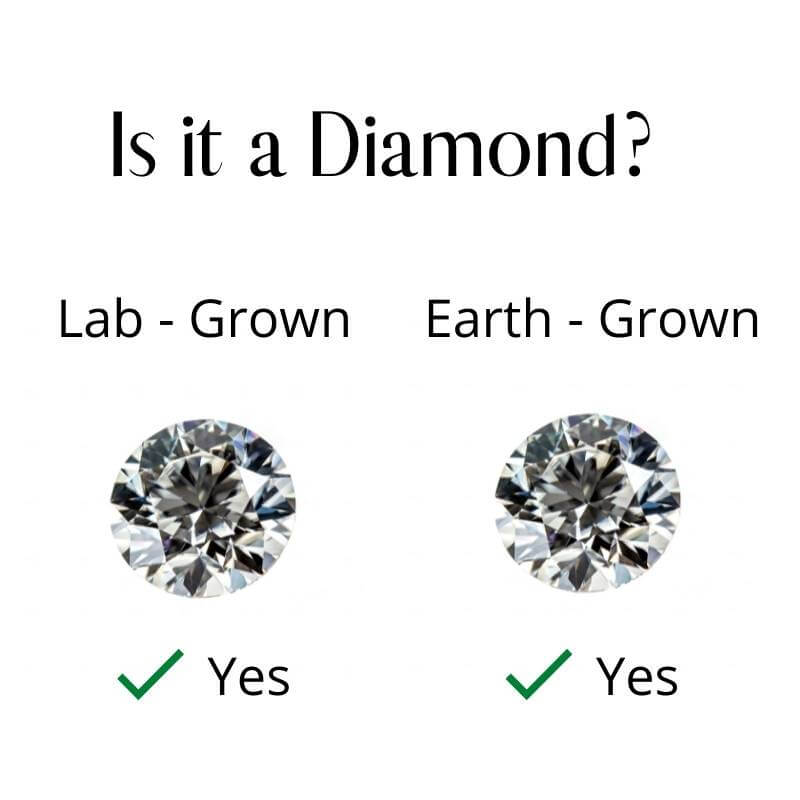
Lab-Grown Diamond
Lab-grown diamonds might be the best way to save money when shopping for a diamond engagement ring or other diamond jewelry. Lab-grown diamonds are the exact same material, with the exact same characteristics as mined diamonds at 30-50% of the cost.
Because they’re grown in a lab, they have far fewer negative impacts on the environment than mined diamonds (the same is true for lab-grown moissanite). Lab-grown diamonds are manufactured in many colors, giving you many options.
Moissanite Collection
-
Moissanite Snowflake Necklace
Regular price $89.00 USDRegular priceUnit price / per -
Hidden Diamond Halo & Moissanite Center Stone Engagement Ring
Regular price $1,395.00 USDRegular priceUnit price / per -
Moissanite Center Stone & Diamond Halo Accent Engagement Style Ring
Regular price $1,495.00 USDRegular priceUnit price / per -
Moissanite Center Stone & Diamond Halo Accent Engagement Style Ring
Regular price $1,695.00 USDRegular priceUnit price / per
Subscribe to our emails
Be the first to know about new collections and exclusive offers.

